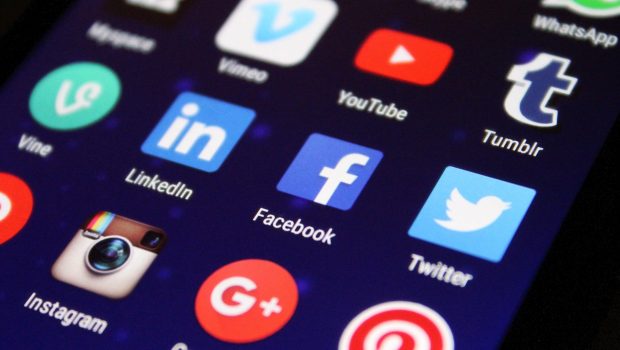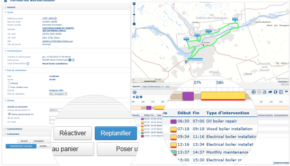Establishing Online Boundaries in a Digital Era
Technology has advanced over the years, and now it dominates much of what we do, where we go, and how we get things done. It’s practically flooding our lives to the point that the world would stop spinning if a meltdown or crash were to occur within such a technologically dependent society. What we once owned, now reigns as master, and that’s due to our inadequate or faulty means of setting boundaries or establishing proper lines that will put technology in its place as a servant.

Image Source: Pixabay
What Is Netiquette?
Online boundaries begin with proper communication and good digital citizenship. Netiquette is necessary to communicate efficiently when you are online, whether you’re in a classroom or a boardroom. The term might be new to some, but its practice could help prevent potential conflicts and unnecessary misunderstandings.
Netiquette is having the same respect for others and showing courtesy while online interacting with other internet users as you would if they were in sitting with you face-to-face. When it comes to your communication through written words, you don’t have the advantage of picking up on social cues from body language, facial expressions, or vocal tone. Without those verbal and nonverbal identifiers used with in-person conversations online, it can make it hard to understand what someone may be genuinely expressing.
Another part of netiquette is protecting people’s personal information and respecting people’s right to withhold certain information. Some people use VPNs to hide their digital footprint when online. No one should feel pressured to share phone numbers, addresses, or emails, and no one should give that type of information to others online without a person’s consent.
One form of unauthorized sharing is doxing, which is something that came to surface in the 1990s within the hacking domain that involved collecting and publishing private or personal details about a person on the internet. Hackers would get information about people from social media platforms, searchable databases that are public or hacking into private accounts. Many online users may choose to go incognito from their browser as a way to protect themselves from trackers or others attempting to view their activity on the internet.
Setting Boundaries with Online Dating
Every day, many people get online to connect with potential dates or find love. Online dating has attracted millions of romantics. There are prominent dating websites, apps and smaller niche sites that provide a community for users who are looking for romance and have various interests and backgrounds.
If ever there was a need for boundaries, it would be when meeting people through dating sites. Safety is a concern for everyone involved. You want to make sure if you are considering online dating, you understand the privacy and safety options for the sites you choose.
These sites often collect and sell user information to make a profit. There may be a notion of anonymity online, but it doesn’t always align with reality. It isn’t uncommon for dating sites to store private data from their users to sell them.
For those who meet up with people in person after meeting them online, it’s important to take precautions, as it can be risky. Whether dating in real life or when the online world meets real life, sexual consent should always be defined in order to prevent assault if a meet up should go beyond being a romantic date outing. A boundary that online users often cross is the non-consensual sharing of intimate images.
One way you can establish boundaries with online dating is to create a username that doesn’t include your real name or any other identifying information. Your number one priority is to protect your privacy. You should not carelessly give out your contact information.
If you are on multiple sites, then use different profile pictures, email addresses, and robust passwords. Remember, you don’t have to share information you don’t want to, and people you connect with online should respect those boundaries. Once you share personal information or pictures, there’s no way to get that information back.
Establishing Proper Lines Using Social Media
Social media can be addictive and cause some people to minimize their social behavior in real life. Often, users compare themselves in appearance or perception of lifestyle, which can be unhealthy when frequently or continually done. There is increasing evidence showing links between anxiety, sadness, and depression among people who do not set healthy boundaries with social media.
One way to establish boundaries with social media is to disconnect from it from time to time and unplug. Be empowered in knowing you can control your social media use. If you find that you use it a little too often, remind yourself that it is not a requirement; it is a choice.
The adage, “if you can’t say something nice, don’t say anything at all” applies with absolute relevance on social media platforms. You are entitled to your perspective and opinion, but understand others share the same entitlement. Promoting negative thoughts and views can cause online conversations to escalate.
Boundaries are built on mutual respect. Maintaining healthy connections with others online depends on your ability to convey different opinions in a non-adversarial manner. Be clear and, in turn, ask for clarity when necessary to prevent situations when something could be taken out of context.
When to Limit Online Shopping
You want to start your boundary setting for online shopping by understanding the impulses you have when it comes to making purchases. So many people get impulsive and click the “buy now” button with lightning speed. Sometimes online shopping gives people a thrill that is not so much about a gadget or handbag but about an emotional void that needs filling.
Neuromarketing is being used by different companies as a tactic to ignite various pleasure circuits in the brain of shoppers through the use of specific images. When a person hits the “purchase” button, the neurotransmitter dopamine releases and stimulates pleasure. If you feel you are guilty of impulsive shopping, you are not alone.
Many people shop on impulse. That’s why establishing boundaries is all the more necessary. According to a survey in 2018, 44% of online shoppers in the U.S. made an impulse purchase.
To set a boundary for online shopping, identify and reflect on your impulsiveness by checking your bank statement. Take a look to see how much money you spend on online purchases. Determine which types of shopping you can cut out or cut down. This is how you work out a weekly savings plan for yourself.
Another boundary-setting tactic is to install browser extensions that can keep you from buying items immediately. There are individual extensions that will let you put a product on hold for as long as a month before permitting you to buy it on the site. Other browser extensions are available that block your access to specified sites for a particular time during the day or prevent you from staying on a specific website for too long.
There is no way to escape the predominance of technology in society. However, you want to remember that technology should serve its users. Setting boundaries puts the control of how technology is used back in your hands and repositions you as the moderator of how much of it affects your lifestyle, relationships, and behavior.
















